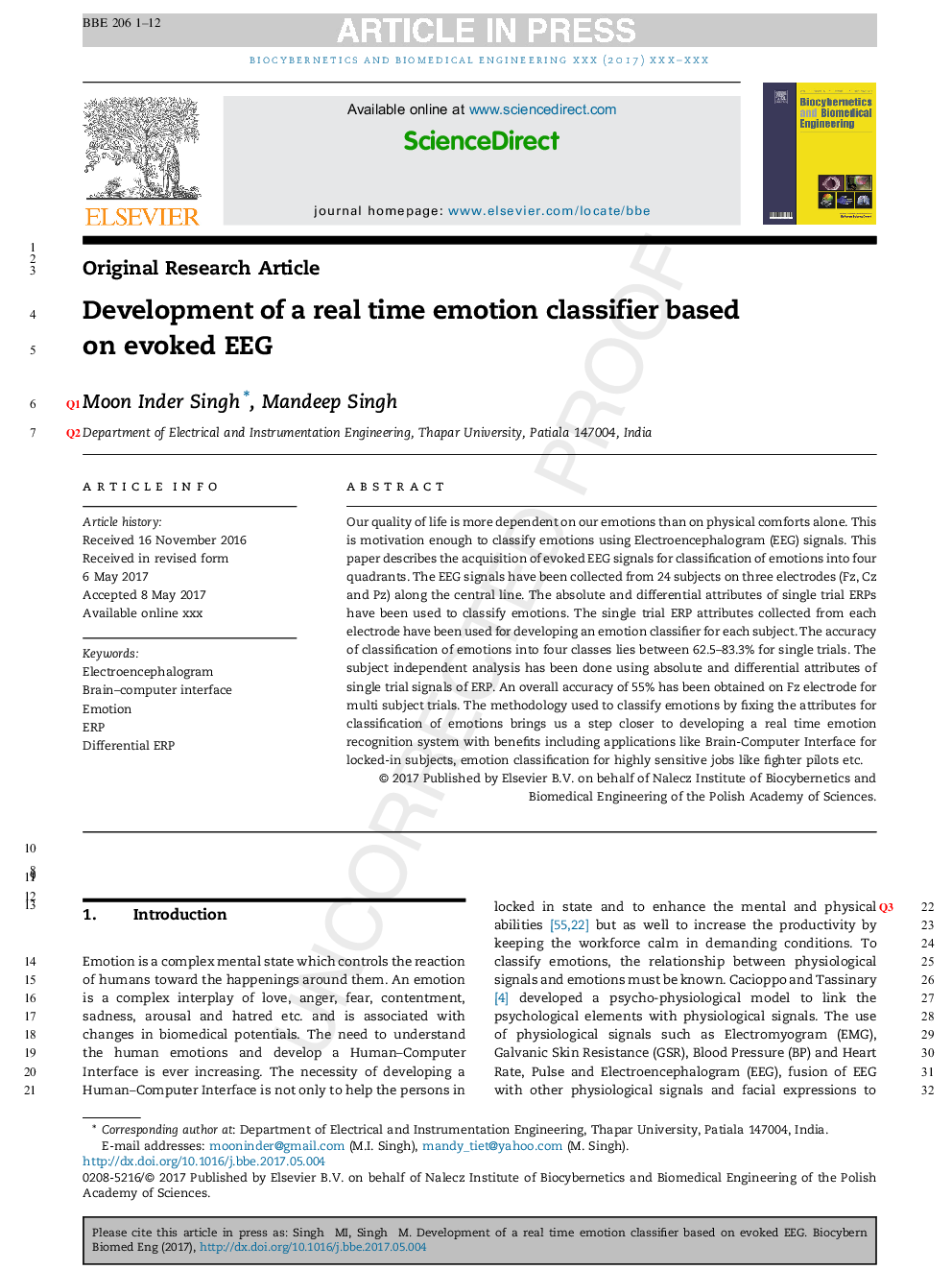| Article ID | Journal | Published Year | Pages | File Type |
|---|---|---|---|---|
| 6484218 | Biocybernetics and Biomedical Engineering | 2017 | 12 Pages |
Abstract
Our quality of life is more dependent on our emotions than on physical comforts alone. This is motivation enough to classify emotions using Electroencephalogram (EEG) signals. This paper describes the acquisition of evoked EEG signals for classification of emotions into four quadrants. The EEG signals have been collected from 24 subjects on three electrodes (Fz, Cz and Pz) along the central line. The absolute and differential attributes of single trial ERPs have been used to classify emotions. The single trial ERP attributes collected from each electrode have been used for developing an emotion classifier for each subject. The accuracy of classification of emotions into four classes lies between 62.5-83.3% for single trials. The subject independent analysis has been done using absolute and differential attributes of single trial signals of ERP. An overall accuracy of 55% has been obtained on Fz electrode for multi subject trials. The methodology used to classify emotions by fixing the attributes for classification of emotions brings us a step closer to developing a real time emotion recognition system with benefits including applications like Brain-Computer Interface for locked-in subjects, emotion classification for highly sensitive jobs like fighter pilots etc.
Related Topics
Physical Sciences and Engineering
Chemical Engineering
Bioengineering
Authors
Moon Inder Singh, Mandeep Singh,
